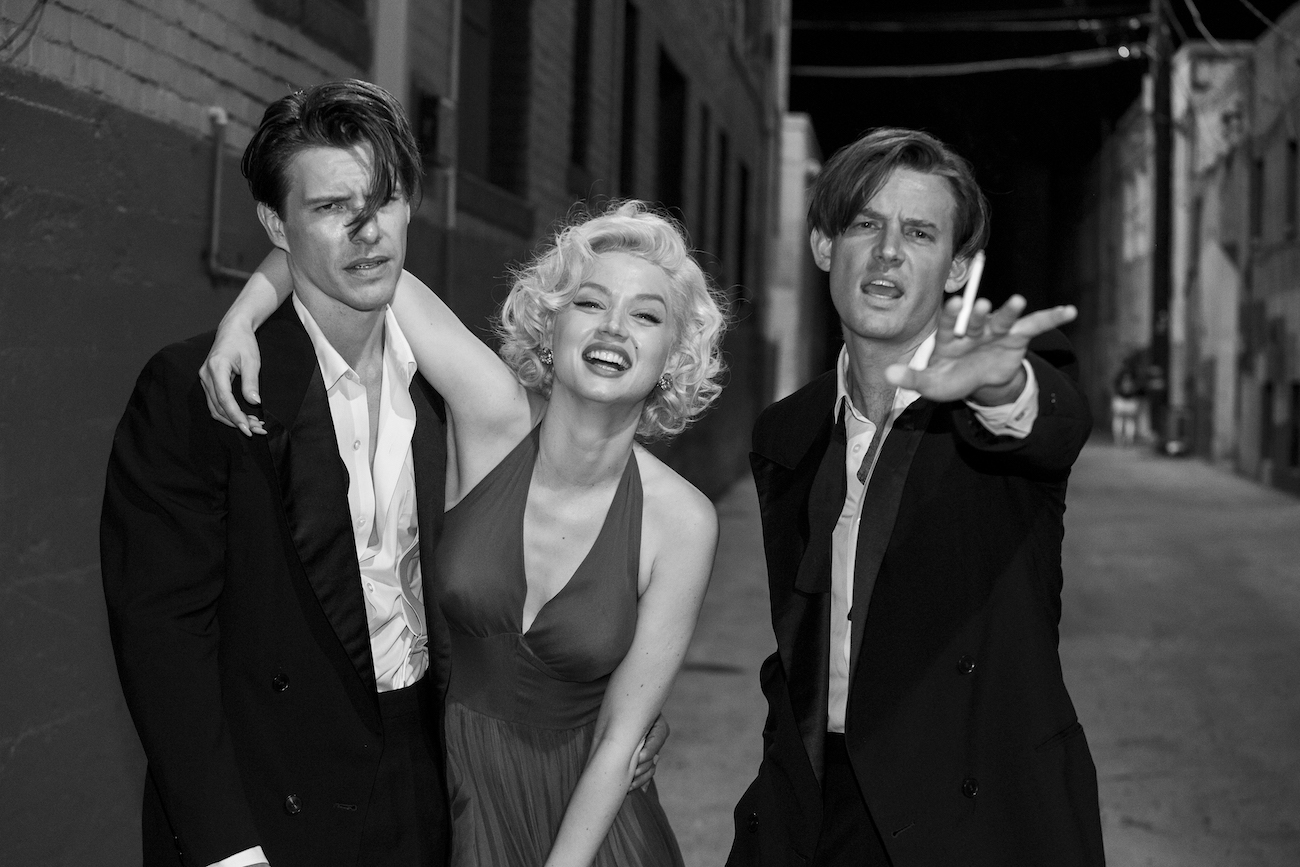
Film Editor James Evenden finds Blonde a gruelling cinematic experience with a scattered structure, despite Armas’ committed performance
Content Warning: This film contains themes of Sexual Assault and Abortion which are mentioned in this article.
There are not many films in which I do not have a gut reaction opinion when I finish them. Usually, I know what I think straight away, but with Blonde, I am still mostly scratching my head. I went into it with the weight of the controversy firmly placed in my mind, and I still did not expect it to go as far as it did. Blonde refuses to shy away from controversy, yet still manages to feel blunt in its overall execution. Blonde is one of the hardest film-watching experiences I have had recently.
Blonde is a fictionalised biographic re-telling of Marilyn Monroe’s (Ana de Armas) life. I must put emphasis on the word fictionalised for this review because director Andrew Dominick seems determined to put Monroe through nearly three hours of hell. It is a good thing for Blonde then, that de Armas is more than up to the gruelling task. de Armas is transformed in Blonde. She manages to put a spin on the ‘Blonde Bombshell’ that feels both original and recognisable, infusing hints of her Cuban accent into her dialogue.

Dominick chooses to frame Blonde as a high art film, and as he throws a number of techniques at the screen, Blonde becomes a numbing exercise in excess for excess’ sake. The filmmaking gives Blonde an overly glossy feel, and whilst this might have been the desired effect, it does not make for a pleasant experience. As Dominick throws the camera around, changes the aspect ratio and switches from black and white to colour, the only thing it did was cause my eyes to roll.
It feels like Blonde wants to be dangerous, instead of being anything particularly new
It feels like Blonde wants to be dangerous, instead of being anything particularly new. This results in frankly disgusting scenes featuring sexual assault and abortions that focus on the grisly detail rather than what this means for Marilyn. de Armas is giving her all, but this cannot take away from the gratuity souring the film.
When Blonde is not focused on gratuity, it is instead focused on uneven dialogue that sits at the surface level of Monroe’s psyche. Musings on fame, motherhood and Hollywood are all well and good, but when nothing is done with these topics, it results in an empty experience. de Armas manages to sell the majority of the dialogue, but the potentially interesting themes do fall flat. It is not helped by the fact that instead of taking things from a different angle, the dialogue beats you over the head with its ideas.
Blonde does not earn any sort of trust from its viewer
Dominick further beats you over the head with the idea that Monroe’s life was terrible through his broken structure. Whilst moving in chronological order, Blonde still feels scattered and manic. Without a concrete structure to anchor the film, Blonde feels more like a collection of moments occasionally tied to a famous moment in Monroe’s life. This could work if the broken structure of Blonde felt earned. There are some art films that require a lot of trust from its viewer, and there are certain films where you are more than willing to grant that trust. Blonde does not earn any sort of trust from its viewer.
Verdict:
Blonde was a slog to get through. At nearly three hours, Netflix’s latest is a tiresome effort that feels more interested in glorifying Monroe than critiquing her infamous image. de Armas is magnificent, and I would recommend Blonde less as a biopic and more as a twisted character study of one woman’s life in Hollywood. de Armas keeps Blonde from completely caving in on itself, but not enough to save it from being a taxing experience. Blonde had to justify its own existence in order to work, and after nearly three hours and several tears shed later, it failed to answer this question.
Rating: 3/10
Blonde is now streaming on Netflix
For more recent releases, check out these other articles from Redbrick Film:
Comments